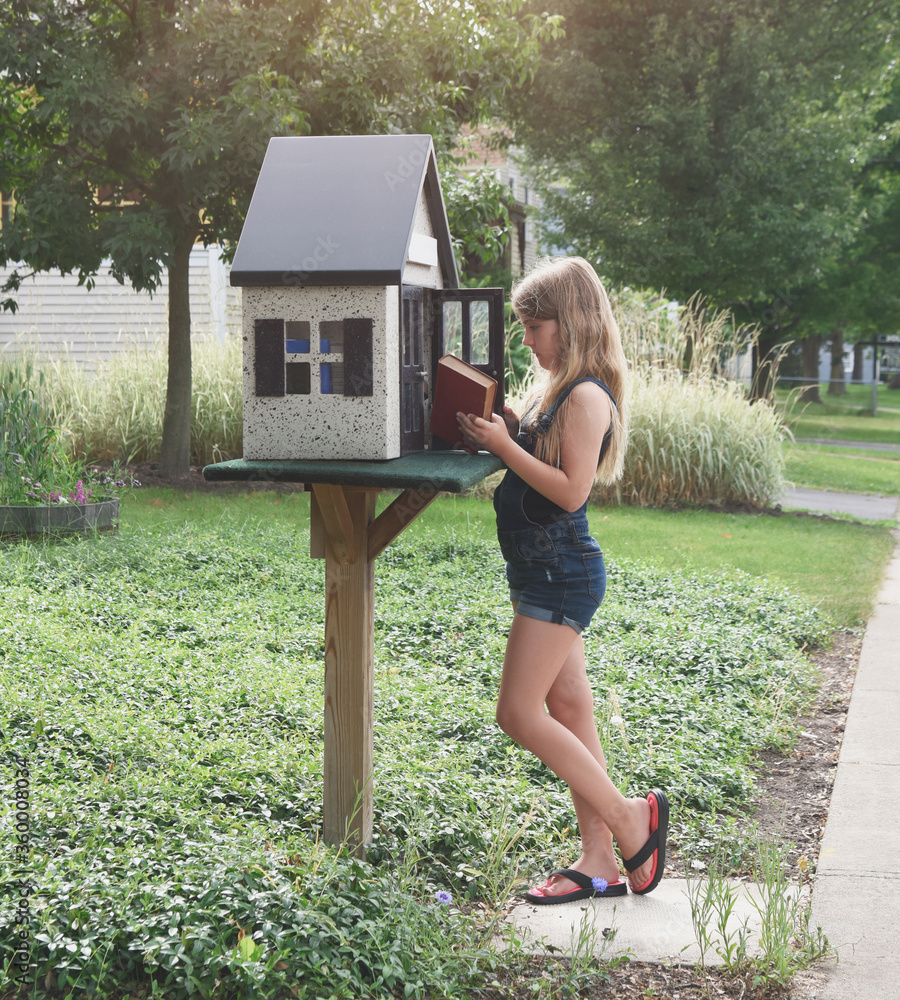
This post may contain affiliate links. Please read our Privacy Policy / Disclosures
In a world that’s increasingly digital, there’s something uniquely charming about the sight of a Little Free Library. These small, often whimsically decorated book-sharing boxes have sprouted up in neighborhoods across the globe, offering free access to books and fostering a sense of community. One of my very favorite hobbies was being a Little Free Library Steward. Unfortunately we moved and I had to leave my little library behind. Someday I hope to start another one.
Let’s explore the magic of Little Free Libraries, their benefits, and how you can get involved.

What Are Little Free Libraries?
Little Free Libraries (LFLs) are small, community-based book exchanges where anyone can take a book or leave a book. The concept began in 2009 when Todd Bol of Hudson, Wisconsin, built a model of a one-room schoolhouse as a tribute to his mother, a teacher who loved reading. He filled it with books and placed it on a post in his front yard, with a sign reading “Free Books.” The idea quickly gained popularity, and in 2012, the Little Free Library organization was officially established.
To view a map of where Little Free Libraries are near to you, visit The Little Free Library Website. Click here. OR you can download the app onto your cell phone.
The Benefits of Little Free Libraries
- Promoting Literacy: Little Free Libraries make books accessible to everyone, regardless of socioeconomic status. By providing free access to books, they encourage reading and lifelong learning.
- Building Community: LFLs serve as community hubs, bringing neighbors together over a shared love of reading. They create opportunities for conversation and connection, fostering a sense of belonging.
- Encouraging Sustainability: By reusing and sharing books, LFLs promote sustainable practices. They reduce waste and encourage the sharing economy.
- Fostering Creativity: Many Little Free Libraries are creatively designed and decorated, reflecting the personality of the community or the steward who maintains them. This adds a touch of art and whimsy to the neighborhood.
How to Start a Little Free Library
Starting your own Little Free Library is a rewarding project that can have a lasting impact on your community. Here’s how to get started:
- Build or Buy a Library: You can build your own Little Free Library using materials like wood or repurposed items. Alternatively, you can purchase a pre-made library from the Little Free Library website or other vendors. Shop here for a kit.
- Register Your Library: Registering your LFL with the official organization gives you access to resources, support, and an official charter sign. It also adds your library to the world map of Little Free Libraries.
- Find a Location: Choose a visible and accessible location for your library. It could be in your front yard, a local park, or outside a community center. Make sure to get permission if you’re placing it on public or someone else’s property.
- Stock Your Library: Fill your LFL with a variety of books for all ages and interests. You can start with books from your own collection, solicit donations from friends and neighbors, or organize a book drive. I always had fun visiting garage sales and stocking up on books. If you mention that you are a Little Free Library Steward, most people will donate their books to you.
- Promote Your Library: Spread the word about your new Little Free Library. Use social media, local community boards, and word of mouth to let people know it’s there. You can also host a grand opening event to generate interest.
- Maintain Your Library: Regularly check on your library to ensure it’s clean, well-stocked, and in good repair. Rotate the books periodically to keep the selection fresh and appealing.

How to Support Little Free Libraries
If starting your own LFL isn’t feasible, there are still plenty of ways to support and enjoy these community treasures:
- Donate Books: Contribute gently used books to local Little Free Libraries. This helps keep the selection diverse and interesting. Find all of the Little Free Libraries located near you on their map, found on their website.
- Spread the Word: Tell friends, family, and neighbors about Little Free Libraries. The more people who know about them, the more they’ll be used and supported.
- Volunteer: Offer to help maintain a nearby LFL. This could involve restocking books, cleaning, or doing minor repairs.
- Enjoy the Books: Take advantage of the books available in LFLs. Borrow a book you’ve been wanting to read or discover a new author or genre.
Conclusion
Little Free Libraries are more than just boxes of books; they are beacons of community spirit, literacy, and creativity. Whether you start your own, donate books, or simply enjoy the offerings, getting involved with Little Free Libraries is a wonderful way to contribute to and enrich your community. So next time you see one of these charming little boxes, take a moment to explore it—you never know what literary treasures you might find!
Do you visit Little Free Libraries? Do you own one or help to take care of one?

Leave a Reply